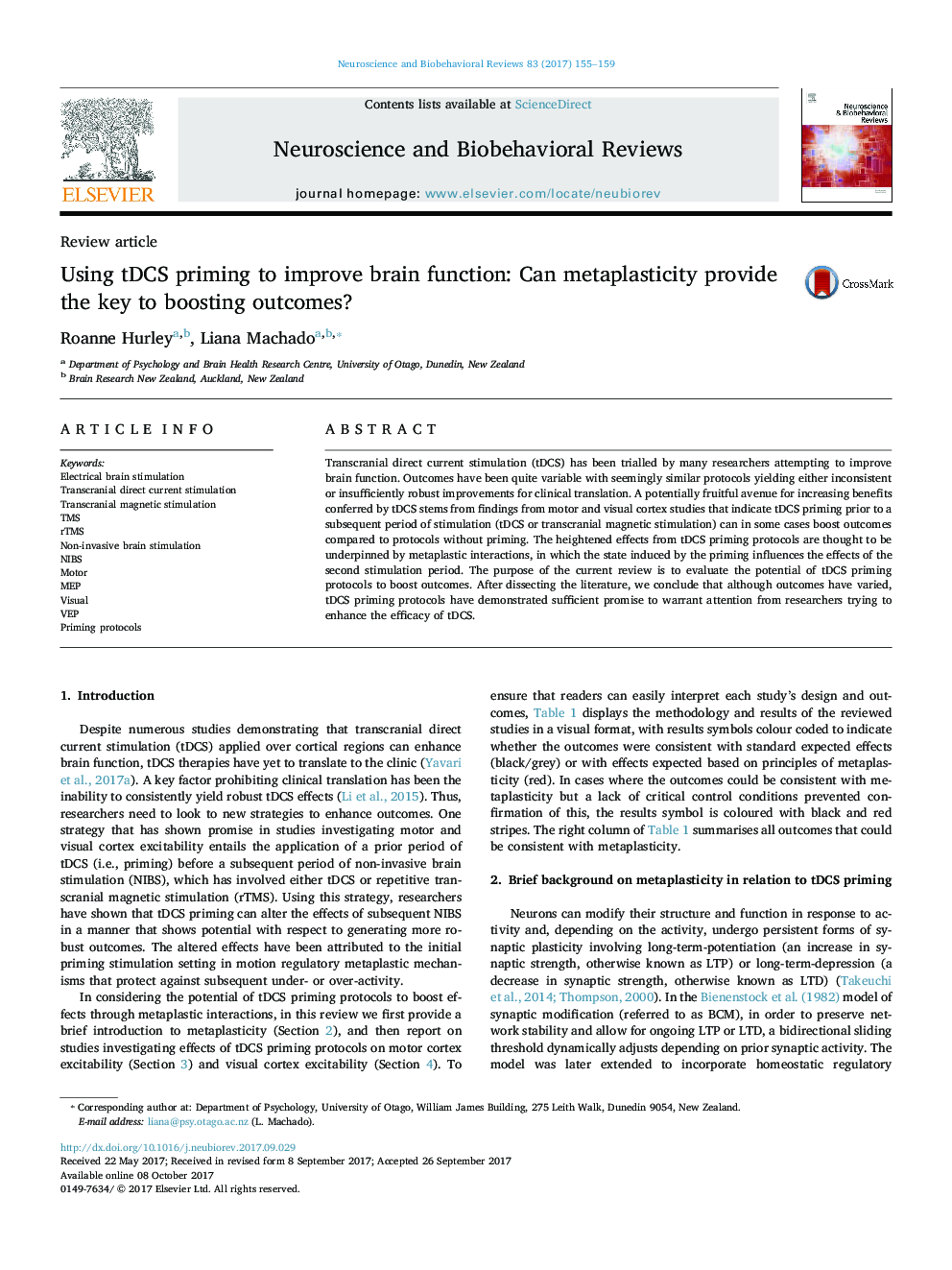| Article ID | Journal | Published Year | Pages | File Type |
|---|---|---|---|---|
| 5043425 | Neuroscience & Biobehavioral Reviews | 2017 | 5 Pages |
â¢tDCS priming protocols show promise over traditional continuous stimulation.â¢Metaplastic regulatory mechanisms appear to underpin the enhanced effects.â¢More research investigating optimal priming doses and delay periods is needed.
Transcranial direct current stimulation (tDCS) has been trialled by many researchers attempting to improve brain function. Outcomes have been quite variable with seemingly similar protocols yielding either inconsistent or insufficiently robust improvements for clinical translation. A potentially fruitful avenue for increasing benefits conferred by tDCS stems from findings from motor and visual cortex studies that indicate tDCS priming prior to a subsequent period of stimulation (tDCS or transcranial magnetic stimulation) can in some cases boost outcomes compared to protocols without priming. The heightened effects from tDCS priming protocols are thought to be underpinned by metaplastic interactions, in which the state induced by the priming influences the effects of the second stimulation period. The purpose of the current review is to evaluate the potential of tDCS priming protocols to boost outcomes. After dissecting the literature, we conclude that although outcomes have varied, tDCS priming protocols have demonstrated sufficient promise to warrant attention from researchers trying to enhance the efficacy of tDCS.
